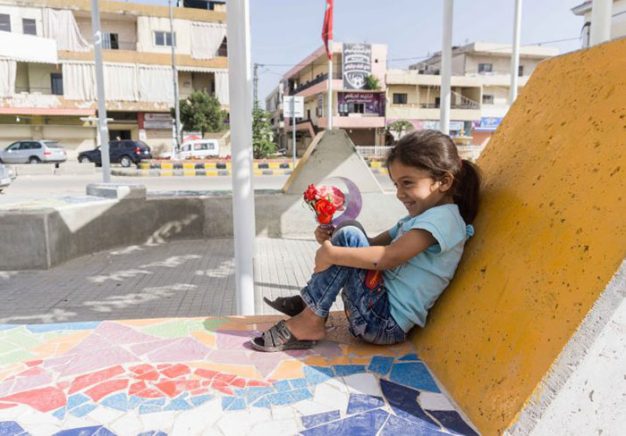
New urban design guide shows city leaders how to prioritise children’s needs
As the need becomes ever more pressing for child-friendly urban designers and city policymakers to flex their creative muscles, a new guide has been published to provide ideas and inspiration.
A partnership of children’s champions, comprising global architecture consultancy Arup and the Bernard van Leer Foundation, has come together to create the Proximity of Care Design guide, focusing on challenges from climate change to air pollution to access of key services.
The aim is to help all those working to better the lives of children in cities, be they educators, property developers, health professionals and countless more, to have the tools they need for delivering tangible benefits to youngsters.
Based on lessons learned from projects around the world, including London and Rio, the guide is designed to show how what works in one place can, with some adjustments, work in other urban settings.
Many cities, says Arup, have reduced space for children and families, with cars pushing them from streets, or narrower walkways and restrictions on public spaces eroding the freedom of children to explore with caregivers and experience nurturing human interactions. Those involved in shaping the design of cities often don’t consider the needs of children beyond specific areas like playgrounds.”
The guide, it adds, ‘urges’ these designers see the whole city ‘as a playground’, giving children aged under-five the ideal settings to be safe, healthy, and stimulated.
Sara Candiracci, Associate Director, Europe Lead Social Value & Inclusive Cities at Arup, said: “Considering children and their caregivers in urban planning is a vital part of creating inclusive cities that work better not only for babies, toddlers, and their caregivers, but for everyone.
“This new guide highlights the practical steps that city makers and leaders can take to embed child and family friendly design principles into their work, and the many benefits that they can generate by enhancing children’s experience of the city. ”
Examples highlighted in the guide include the transformation of a traffic-heavy corridor in Chile into an integrated street supporting health, learning behaviour and the wellbeing of children, parents and teachers, and in Uruguay how the principles were used to integrate deaf communities in public spaces by developing stimulating, safe routes between educational institutions, playgrounds and public spaces.
Rushda Majeed, Chief Programme Officer at the Bernard van Leer Foundation, said: “A good start in life for babies and toddlers is one of the best investments a city can make. Yet most children in urban areas don’t have close access to the safe, healthy and vibrant urban environments and services they need to develop and flourish. The Proximity of Care Approach and Design Guide was developed by Arup and the Bernard van Leer Foundation to change this.”
The guide, she added, ‘belongs to anyone who is ready to reshape their city and create incredible spaces and services for young children, caregivers and whole communities’.
Click here to find out more about the Proximity of Care Design guide.




